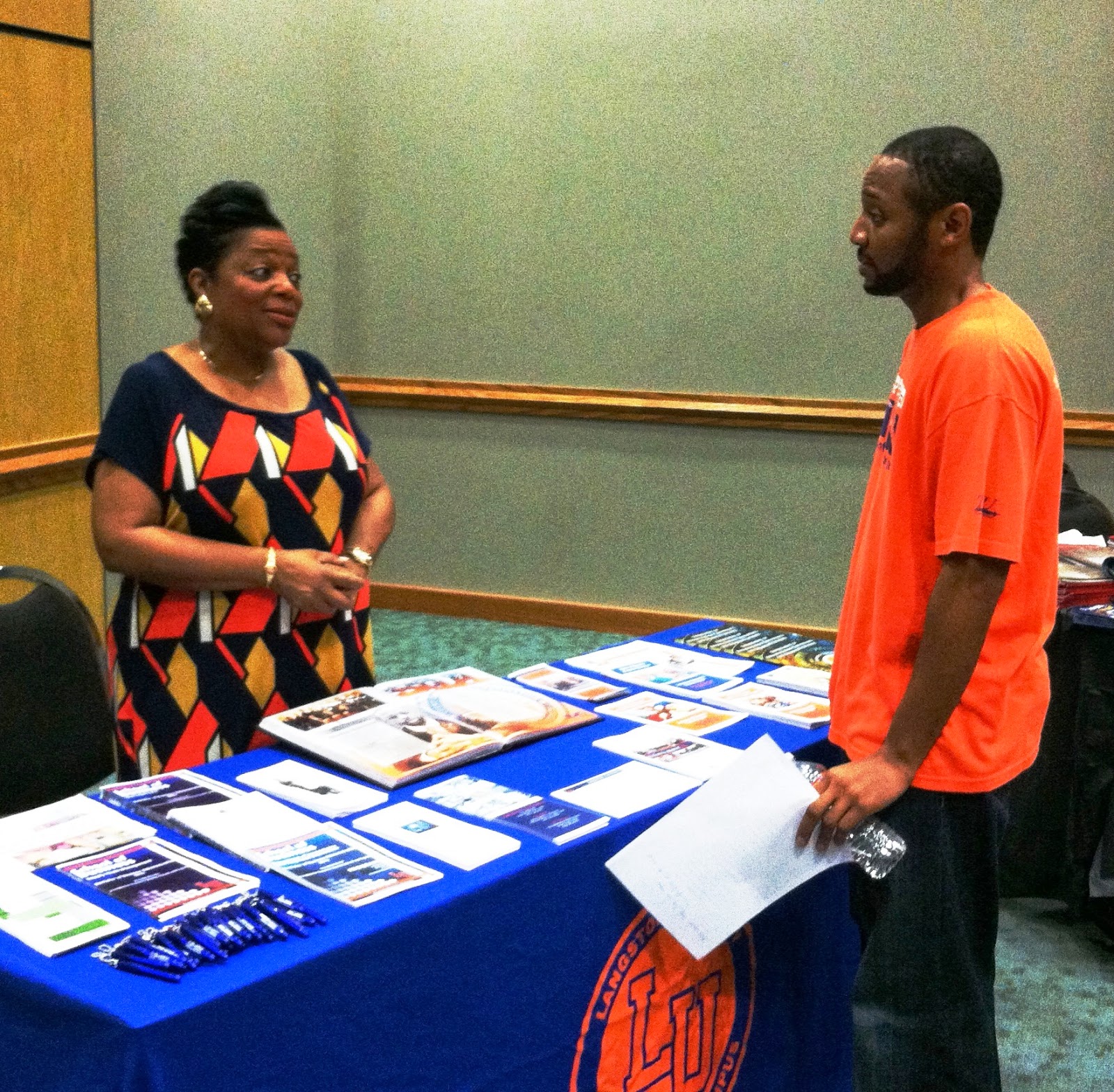This model included a group of youths who needed
to learn about more options than they currently knew or experienced; to believe
that they, too, could achieve; and to learn that many paths, direct and indirect,
lead to success.
The original design was to have three sessions with two speakers
assigned to each of five rooms. Attendees could eat, socialize, attend sessions related to
their top career interests, ask questions, attend another session if they
wished, move on to the typical “college night” or career recruiting tables, and
then network before leaving. The vendors represented area colleges
and a career technology center.
ONE LARGE ROOM
Everyone, however, met in one large room set up with round tables. Professionals, speaking from the podium at the front, spoke to all attendees. Each presentation was about fifteen minutes followed by Q & A. Refreshment tables in the back of the room and vendors’ tables on the right were convenient. The one big room's utility and intimacy perfected venue.
CONTENT provided by "real" people
Each speaker talked about his or her own journey, often incredibly difficult or seemingly impossible, and offered tips for success. The content variety increased the value beyond typical career/college information events.
Professionals repeated how education or training, even continuing over time, would improve earning ability and self-esteem. In addition, they spoke about soft skills, levels of employment, salaries, and various paths for students without scholarships or funding, i.e., working full or part-time while earning an education.
Each speaker talked about his or her own journey, often incredibly difficult or seemingly impossible, and offered tips for success. The content variety increased the value beyond typical career/college information events.
Professionals repeated how education or training, even continuing over time, would improve earning ability and self-esteem. In addition, they spoke about soft skills, levels of employment, salaries, and various paths for students without scholarships or funding, i.e., working full or part-time while earning an education.
Examples of career presenters included a dentist, registered
nurse, engineer, graphic designer, dean, doctor, chef,
truck driver, welder, construction association representative, apprenticeship
training resource, a union president, sailor, etc.
Recurring Themes
- Continuing postsecondary training/education
- Tying the present to the near and distant future, e.g., the journey
- Goal-setting, goal-achieving and perseverance
- Academics, leadership, team-playing and behavior
- Test-taking continues in most professions, e.g., licenses
Audience
- Middle school students
- High school students
- High school graduates
- Dropouts
- Parents
Serendipitous Plan - shorter than scheduled
Original Plan 10:00 am -2:00 pm
Registration: 10:00 a.m. to 10:30 a.m.
Registration: 10:00 a.m. to 10:30 a.m.
Welcome: 10:30 a.m. to 10:50 a.m.
Session I: 11:00 a.m. to 11:45 a.m.
Session I: 11:00 a.m. to 11:45 a.m.
Sessions II & III
Closing Remarks: 15 minutes
 |
| Discussing Langston University |
Event Registration: www.eventbrite.com
Possible Event Sponsors/Organizers A school, community, career technology center, church,
business, or other entity or entities in partnership could organize such an
activity. Refreshments and door prizes were donated.
Actual Sponsor and Organizer of the All STAAR Youth Career Day 2013
STAAR Foundation, founded and directed by Gerald Scott, sponsored this career day. The leaders of its S.I.S.T.E.R.S. Mentoring Program created the vision and plan, executed by staff and volunteers from STAAR and its Tradesman Mentoring Program.
Katawna Stephens was the event coordinator along with Contessa Duncan, Tyechia Crowder, Brittany Johnson, and Lynette Jones, other S.I.S.T.E.R.S. leaders.





No comments:
Post a Comment